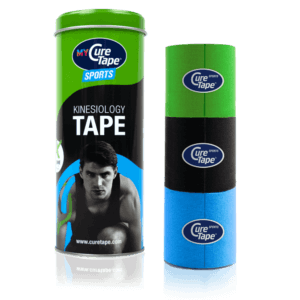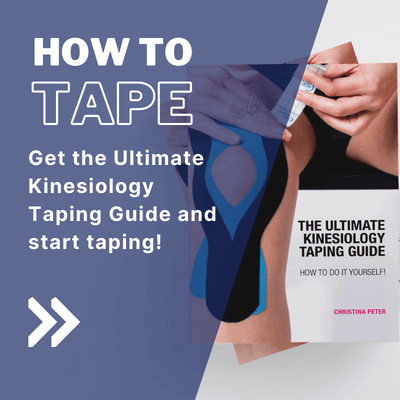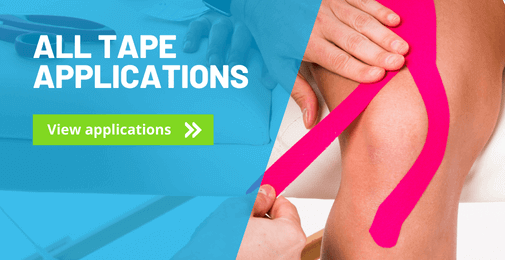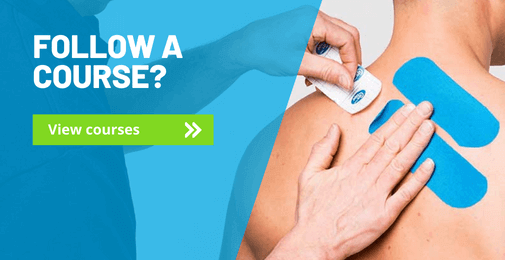You have probably experienced calf cramps or other pain in the calves. In many cases, these problems go away by themselves. If the pain persists, you can try the following taping application. This application is not only suitable for acute complaints, but also prevents calf cramps at night or muscle pain.
How to tape painful calves
Tips for a good calves taping application:
- Is the cause of the complaint or pain clear?
- Check if there any contraindications for not taping.
- Before you start taping, carefully read the instructions.
- Choose a colour of tape, any colour that fits your mood!
- Round of all the edges to prevent peeling.
- Do not stretch the tape at the beginning and the end.
- Rub the tape well for adhesion. Heat activates the adhesive layer.
- Showering or swimming is possible, pat the tape dry after it gets wet. Do not rub it hard.
- It is easier to remove the tape with body or massage oil.

Christina’s advice when taping your calves
In the self-taping instructions, I have chosen taping applications that are easy to apply yourself. In order to make this treatment safe, I give practical tips, which you should take into account before, during and after a tape treatment. They are based on my years of practical experience. If the complaints persist, always consult a therapist or doctor.
Instructions
Tape
Shape:Y-Tape.
Number of strips: 1.
Technique: muscle technique (slight pull).
Measuring and cutting the tape
Step 1:
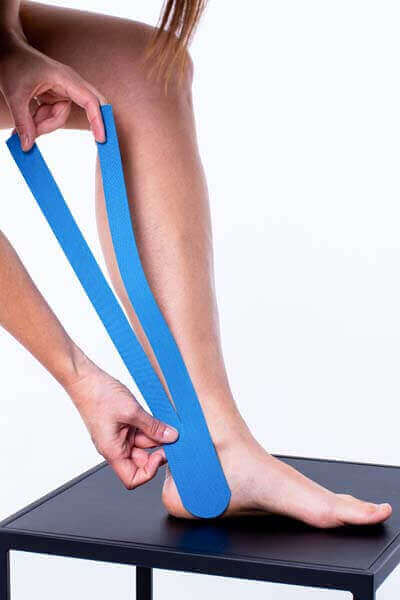
- Sit down or stand up and stretch the calves by bending the leg forward.
- Measure the length of the tape from the heel to the back of the knee. Cut the tape in half up to the last 10 cm.
Applying the tape
Step 1:
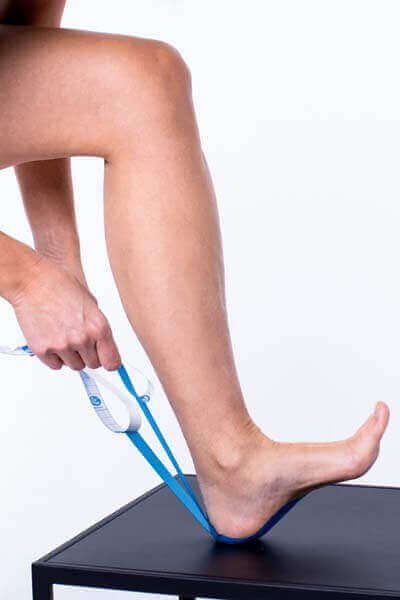
Step 2:
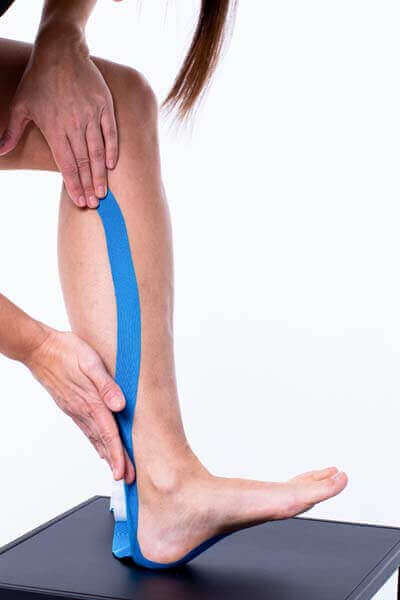
Step 3:
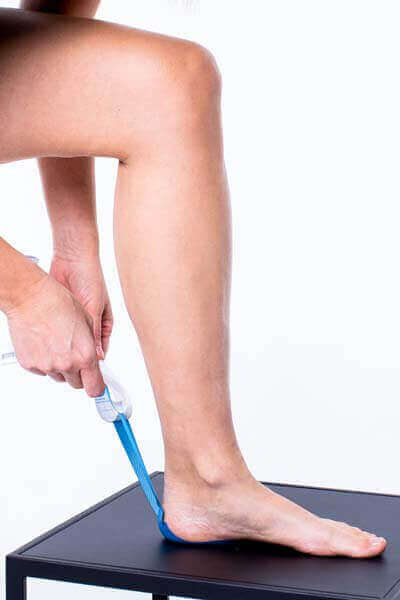
Step 4:
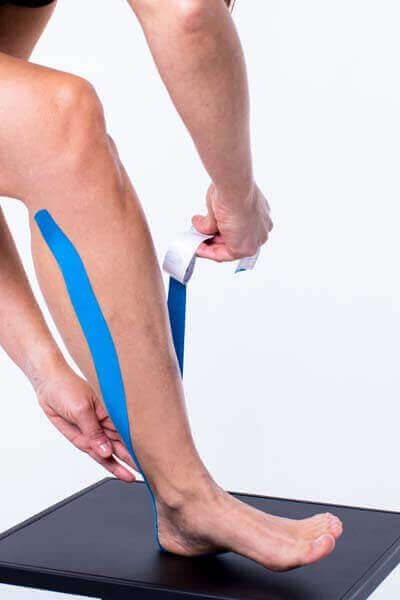
Step 5:
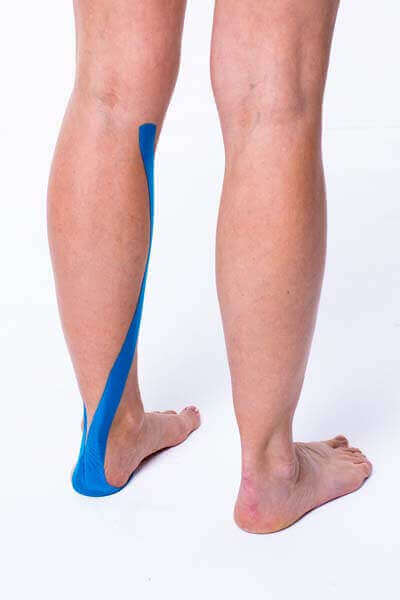
- Place the base of the wide section on the underside of the heel without stretching. Always ensure that there are no wrinkles in the tape.
- Pull your foot towards you until you feel a stretch in the calf.
- Release the first tape up to the last 5 cm of the release paper and apply the tape with slight tension around the outer muscle belly edge of the calf.
- Place the second tape around the inner muscle belly edge of the calf in the same way.
- Rub the tapes on well.
- Make sure that the two ends of the tapes do not end in the hollow of the knee. This area is very sensitive and the tape may cause irritation.
Popular products to tape your foot
-
MYCureTape® – 3 Rolls Kinesiology Tape – Value Pack
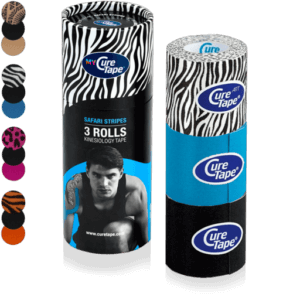 $26.95
In stockSelect options This product has multiple variants. The options may be chosen on the product page
$26.95
In stockSelect options This product has multiple variants. The options may be chosen on the product page -
Book: The Ultimate Kinesiology Taping Guide
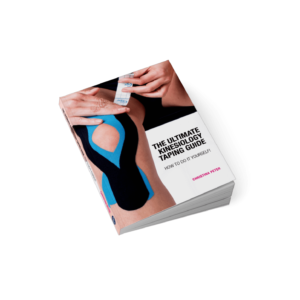 $29.95
In stockAdd to cart
$29.95
In stockAdd to cart -
CureTape® Ultimate Self-Tape Starter Kit
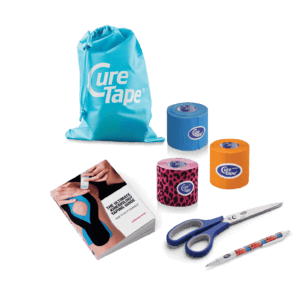 $87.95
In stockAdd to cart
$87.95
In stockAdd to cart
Learn how to tape
- 30 taping instructions for common injuries that taping can help you with
- 176 pages of clear written instructions
- 200 step-by-step instructions accompanied by photo’s, illustrations and scannable video’s through QR codes
What are you waiting for? Order your copy today!
*This book is intended for people who want to tape an injury or complaint themselves. If uncertain about the complaint, consult a physiotherapist.
THYSOL is the manufacturer of the kinesiology tape brand CureTape. As CureTape, we have been training and supplying professionals for almost 25 years. And consumers now know how to find us too! By manufacturing all our tapes in our own factory, we can guarantee the best quality!
Please note that the indicated tape applications and information on our website about the possibilities with kinesiology tape have not yet been scientifically proven. The statements and examples mentioned are based on long-term experiences of patients and trained therapists.
Contraindications not to tape: pregnancy, open wounds, broken bones, unexplained complaints, allergies and skin diseases, use of medication such as blood thinners, thrombosis and fever. Always apply tape in consultation with a specialist.

